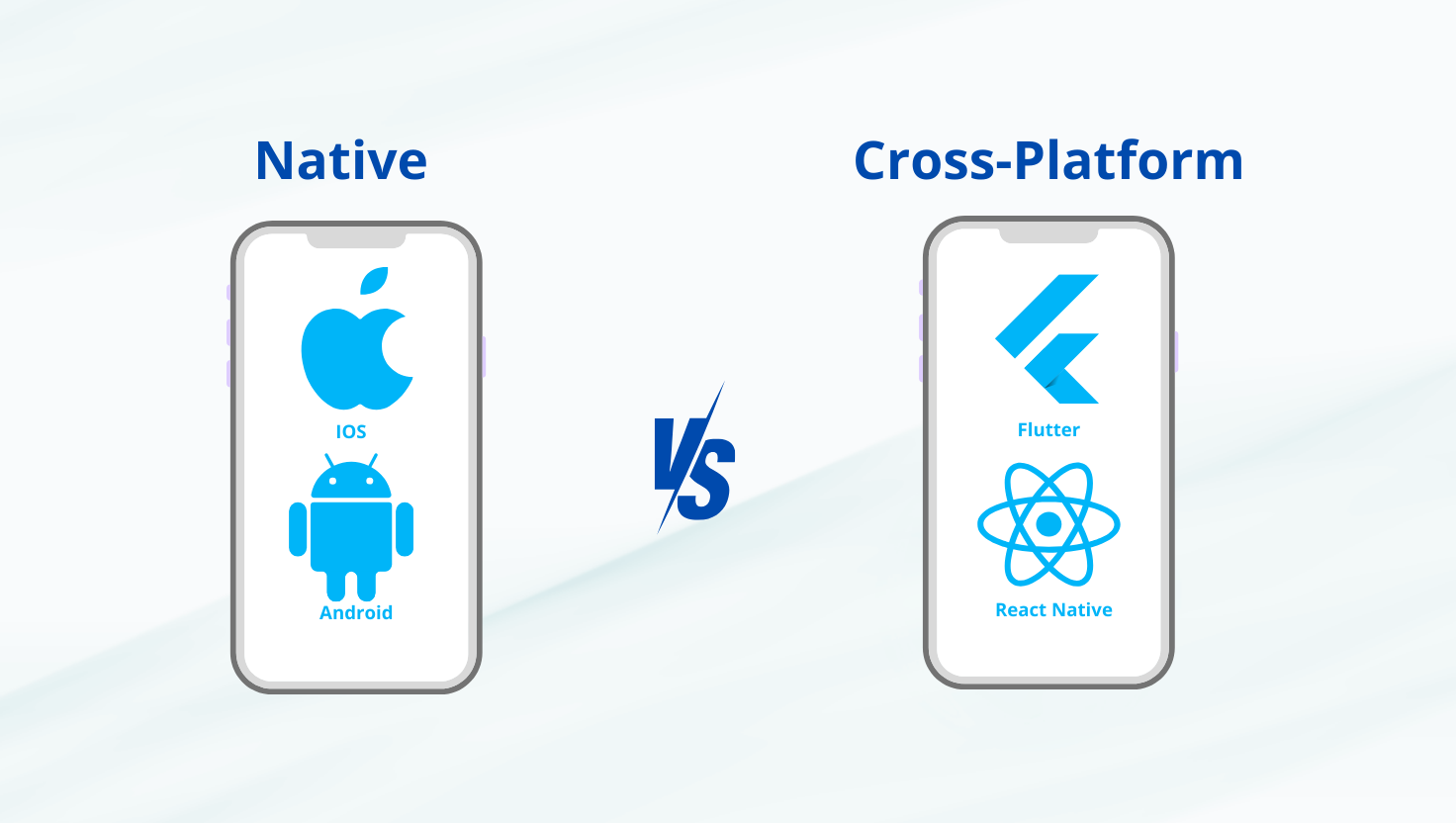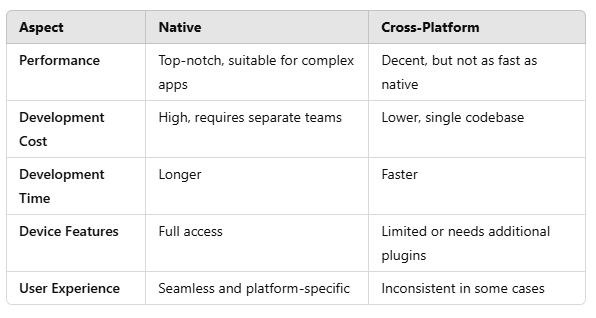
23 Jan Native vs. Cross-Platform: Choosing the Right Mobile App Strategy
When building a mobile app, choosing the right strategy is an important first step. Two popular approaches are Native and Cross-platform development. Each of them has pros and cons that can affect development time, cost, and user experience. This blog will help you understand the differences and decide which strategy suits your business needs.
What is Native?
Native: These apps are built specifically for one platform, like iOS using Swift/Objective-C or Android using Kotlin/Java. Native apps offer full access to device features and deliver top-notch performance.
Pros
- Optimal performance since the app is tailored to a specific platform.
- Full access to device features like GPS, camera, and sensors.
- Smooth user experience aligned with platform standards.
Cons
- Higher development costs as separate teams are needed for each platform.
- Longer development time compared to cross-platform apps.
What is Cross-Platform?
Cross-Platform: These apps are created using frameworks like Flutter, React Native, or Xamarin to run on multiple platforms with a single codebase. This approach focuses on efficiency and cost-effectiveness.
Pros
- Single codebase reduces development time and costs.
- Ideal for simple apps with similar features across platforms.
- Faster development, especially for prototypes.
Cons
- Performance may not match native apps, especially for heavy applications.
- Limited access to device features or reliance on additional plugins.
- User experience can feel less polished compared to native apps.
Native vs. Cross-Platform: A Comparison

Real-World Examples
- Native Apps: Popular apps like Instagram and WhatsApp use native development to deliver smooth and responsive user experiences tailored to iOS and Android platforms.
- Cross-Platform Apps: Companies like Airbnb and Alibaba have leveraged cross-platform frameworks to reduce development time while maintaining functionality across devices.
How to Choose the Right Strategy
Know Your Target Audience: If your audience primarily uses one platform (e.g., iOS or Android), native might be the better choice. Native apps ensure a seamless experience tailored to their preferred platform.
Consider Your Budget: For tighter budgets, cross-platform is a cost-effective option. With a single codebase, you can save resources while reaching a broader audience.
Evaluate App Complexity: Apps requiring high performance and advanced device features are better suited for native development. For example, gaming apps or augmented reality applications benefit from the precision and power of native development.
Think Long-Term: If you plan continuous updates and scalability, native apps provide better stability and flexibility. On the other hand, cross-platform can be a great starting point for MVPs (Minimum Viable Products).
Test the Market: Cross-platform development is ideal for testing ideas and gathering user feedback quickly. Once you’ve validated the concept, you can decide whether transitioning to native development is necessary.
Conclusion
Choosing between native and cross-platform development depends on your business goals, budget, and target audience. Native apps deliver the best performance for complex projects, offering a seamless user experience and advanced functionality. Cross-platform apps, on the other hand, are perfect for startups and businesses looking for an affordable way to reach users across platforms quickly.
By understanding the strengths and limitations of each approach, you can make an informed decision to align with your objectives. Whether you’re building an app for millions of users or testing a groundbreaking idea, selecting the right strategy will set your project up for success. PT KDN is ready to assist you in choosing and implementing the best mobile app solution for your digital needs.


Sorry, the comment form is closed at this time.